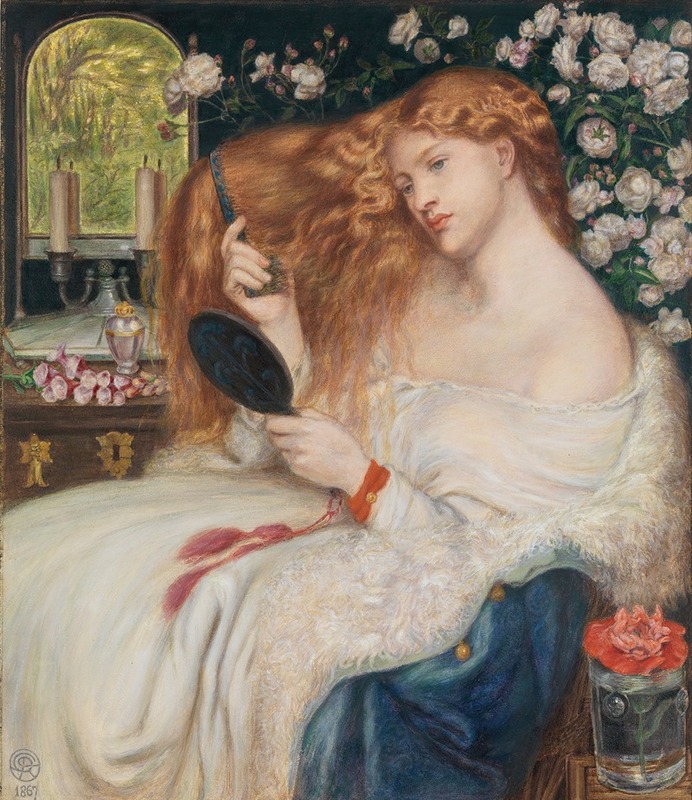
Lady Lilith by Dante Gabriel Rossetti Artvee
Lady Lilith Dante Gabriel Rossetti. The Metropolitan Museum of Art New York City, United States. Download this artwork (provided by The Metropolitan Museum of Art). Learn more about this artwork.. Dante Gabriel Rossetti. Drawing. Watercolor painting. Google apps Google Arts & Culture features content from over 2000 leading museums and.

Rossetti's Lady Lilith Pre raphaelite art, Lady lilith, Pre raphaelite paintings
By Dante Gabriel Rossetti. (For a Picture) Lady Lilith by Dante Gabriel Rossetti, Public Domain, Metropolitan Museum of Art. Of Adam's first wife, Lilith, it is told. (The witch he loved before the gift of Eve,) That, ere the snake's, her sweet tongue could deceive, And her enchanted hair was the first gold. And still she sits, young while.

Dante Gabriel Rossetti Lady Lilith Dante Gabriel Rossetti, Pre Raphaelite Paintings, Pre
Rossetti's Lady Lilith of 1867 originally bore a label admonishing the young male viewer not to be ensnared by the beauty of the Faustian enchantress, but the figure, with her revealing dress, languid posture, and long red hair, is rendered with a sensuality that subverts the label's warning.
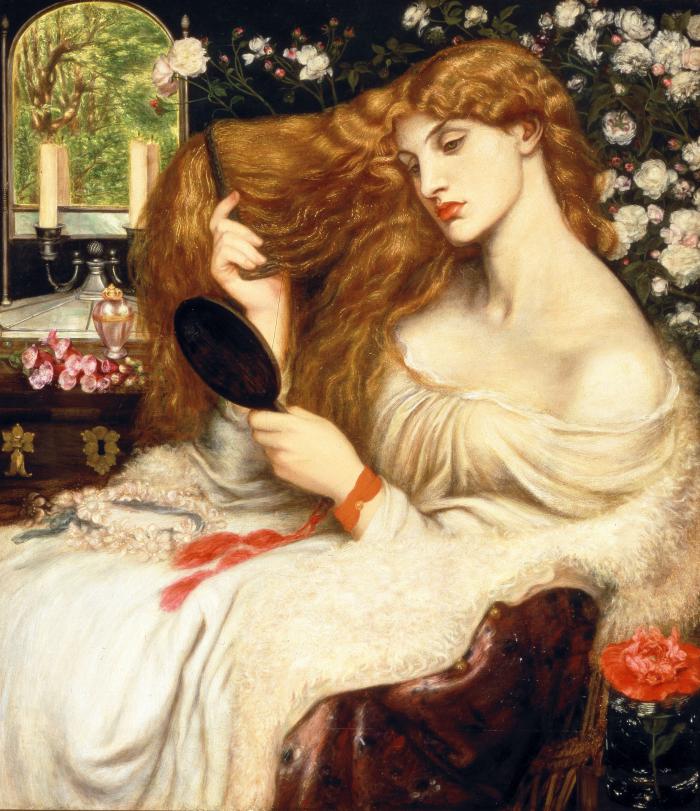
Dante Gabriel Rossetti, Lady Lilith (painting), 1868 COVE
Dante Gabriel Rossetti created the poem Body's Beauty and the associated painting Lady Lilith in a time and place where women had a specific role in society. The 'ideal' nineteenth-century English woman was submissive to any male influence in her life, always proper, and well behaved. With this poem and painting, Rossetti presents an.

“Details of Lady Lilith, Dante Gabriel Rossetti, 18661868. ” Aesthetic art, Classical art
Lady Lilith was intended to be paired with another of Rossetti's paintings, Sibylla Palmifera (1866-70). Wilding served as the model for this composition and it's possible that Rossetti.
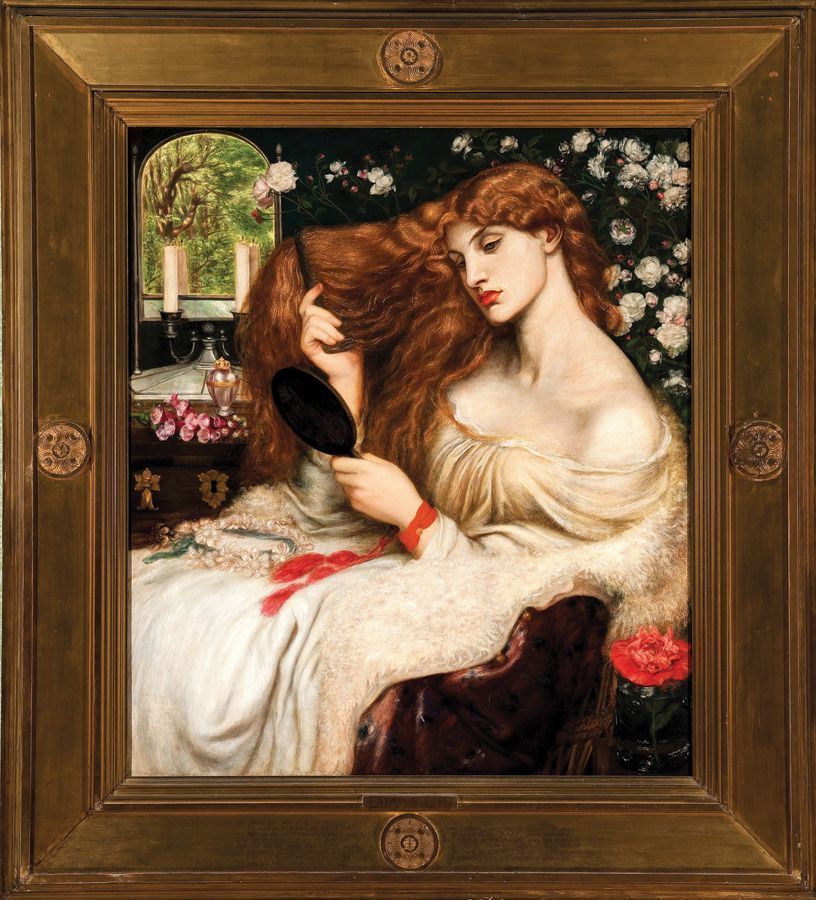
Dante Gabriel Rossetti, Lady Lilith, 18661868 Kunst, Künstler, Ausstellungen, Kunstgeschichte
Lady Lilith is an oil painting by Dante Gabriel Rossetti first painted in 1866-1868 using his mistress Fanny Cornforth as the model, then altered in 1872-73 to show the face of Alexa Wilding. [1] The subject is Lilith, who was, according to ancient Judaic myth, "the first wife of Adam " and is associated with the seduction of men and the.
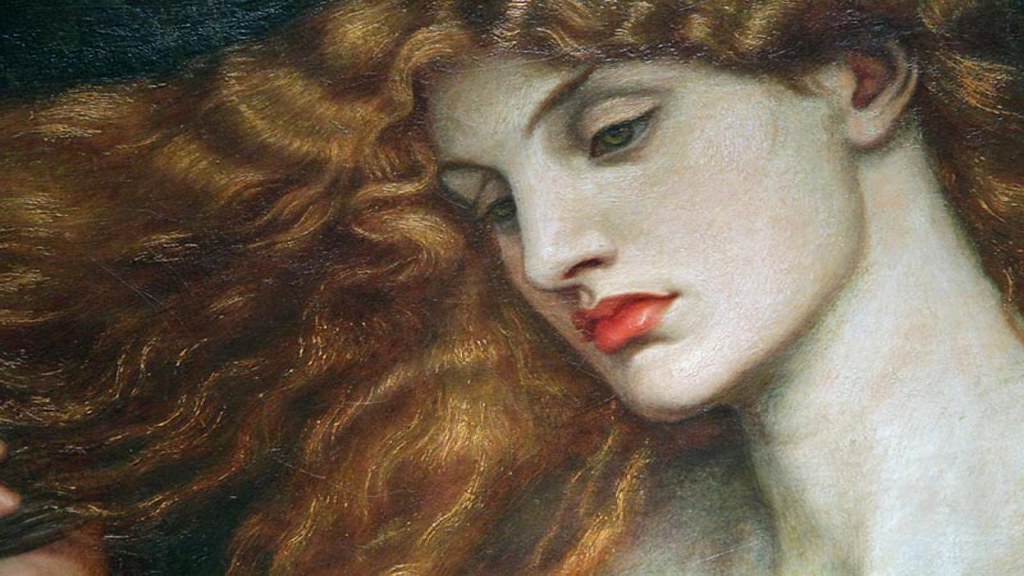
Lady Lilith by Dante Gabriel Rossetti (detail) Valeria V Flickr
This is Dante Gabriel Rossetti's Pre-Raphaelite vision of Lady Lilith, Adam's wife before Eve and a symbol of malevolence and vanity. Painted in 1867 Rossetti used his lover Fanny Cornforth initially for the face of Lilith but later in 1872-3 changed the face to that of Alexa Wilding. This picture was a companion piece to Rossetti's Sibyl.

Lady Lilith. Opera di Dante Gabriel Rossetti
"Lady Lilith" by Dante Gabriel Rossetti depicts Lilith, who is a figure from Jewish mythology and is portrayed as an iconic, Amazon-like female with long, flowing hair. The name 'Lilith' is derived from the Babylonian Talmud. It refers to a dangerous demon of the night, associated with the seduction of men and the murder of children.
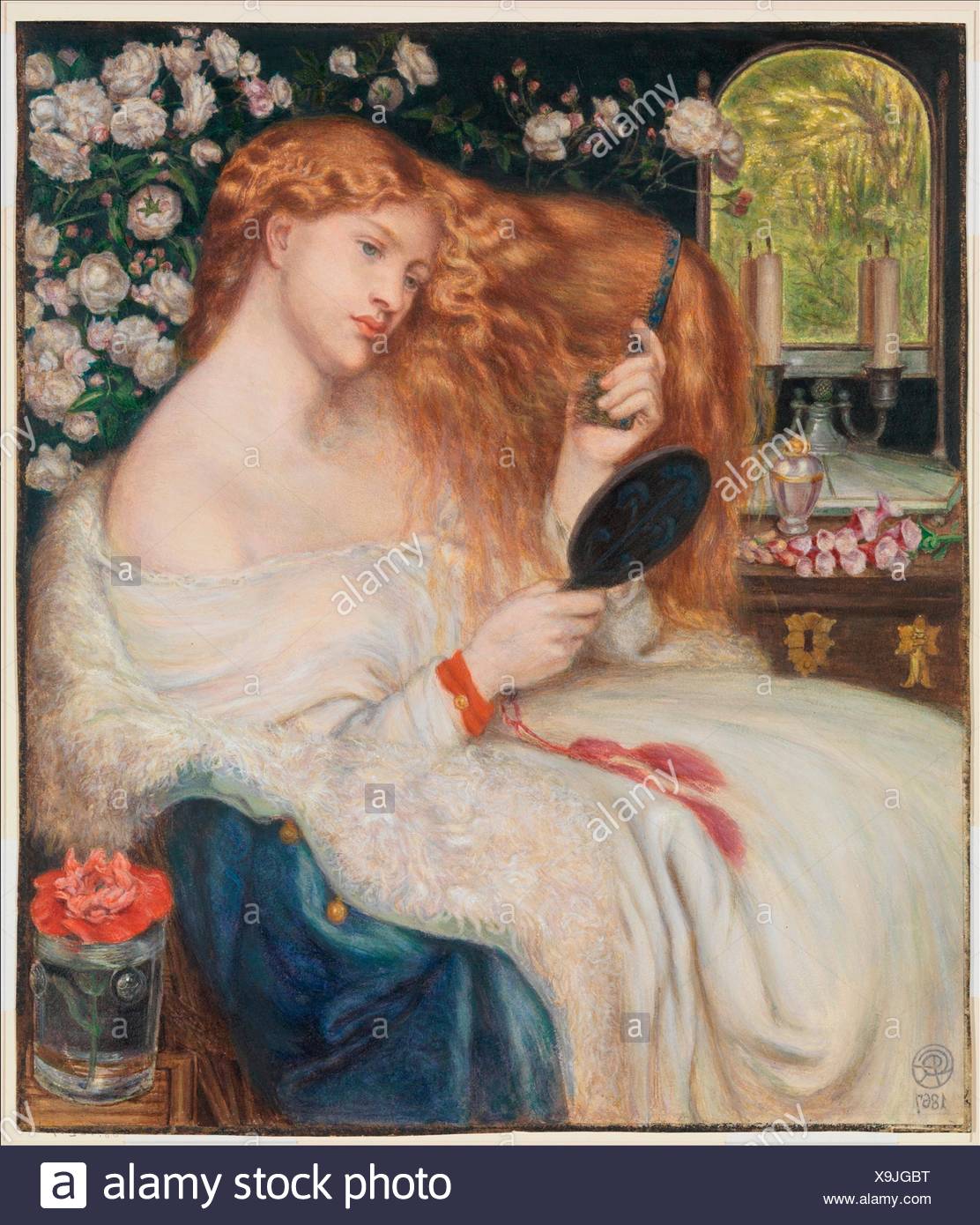
Lady Lilith Dante Gabriel Rossetti Prints Art & Collectibles
Lady Lilith (1866-1868, altered 1872-1873) belongs to Rossetti's famous series of half-length female portraits, which started with the painting Bocca Baciata (1859). The subject of the painting originates from Jewish mythology: Lilith was the first wife of Adam, and unlike Eve, she was created at the same time and from the same clay as Adam.

Lady Lilith, Dante Gabriel Rossetti Projecto Adamastor
Rossetti, first painted Lady Lilith in 1866-1868 using Fanny Cornforth. However, in 1865 he met Alexa Wilding, who according to Rossetti brought out all the characteristic features of Lady Lilith. Rossetti described Alice's beauty as more refined and able to express both virtue and vice evocative of the actual subject-Lady Lilith.
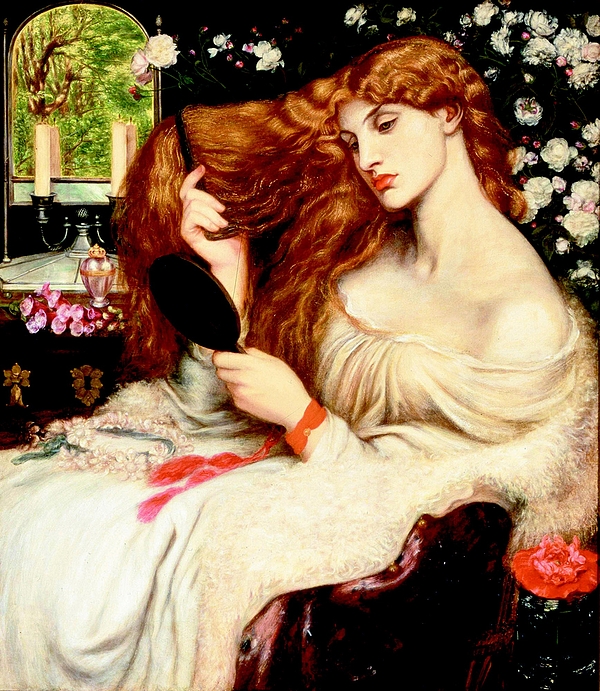
Lady Lilith Tapestry for Sale by Dante Gabriel Rossetti
In his Lady Lilith painted between 1868 and 1873, Dante Gabriel Rossetti depicts the themes of both feminine sexuality and feminine culpability in an especially striking and unusual manner. Here he chooses to emphasize the parallel between the contemporary idea of the highly sexual seductress to that of Christian mythology's first female.

Dante Gabriel Rossetti Lady Lilith, 19th century PICRYL Public Domain Search
The painting is part of the double work that includes the companion sonnet Body's Beauty, which is the 1881 title of the work originally called "Lady Lilith" and then "Lilith" (in its 1868 and 1870 printings respectively). The double work should be compared with DGR's translation of a passage from Goethe ("Lilith—from Goethe") and.
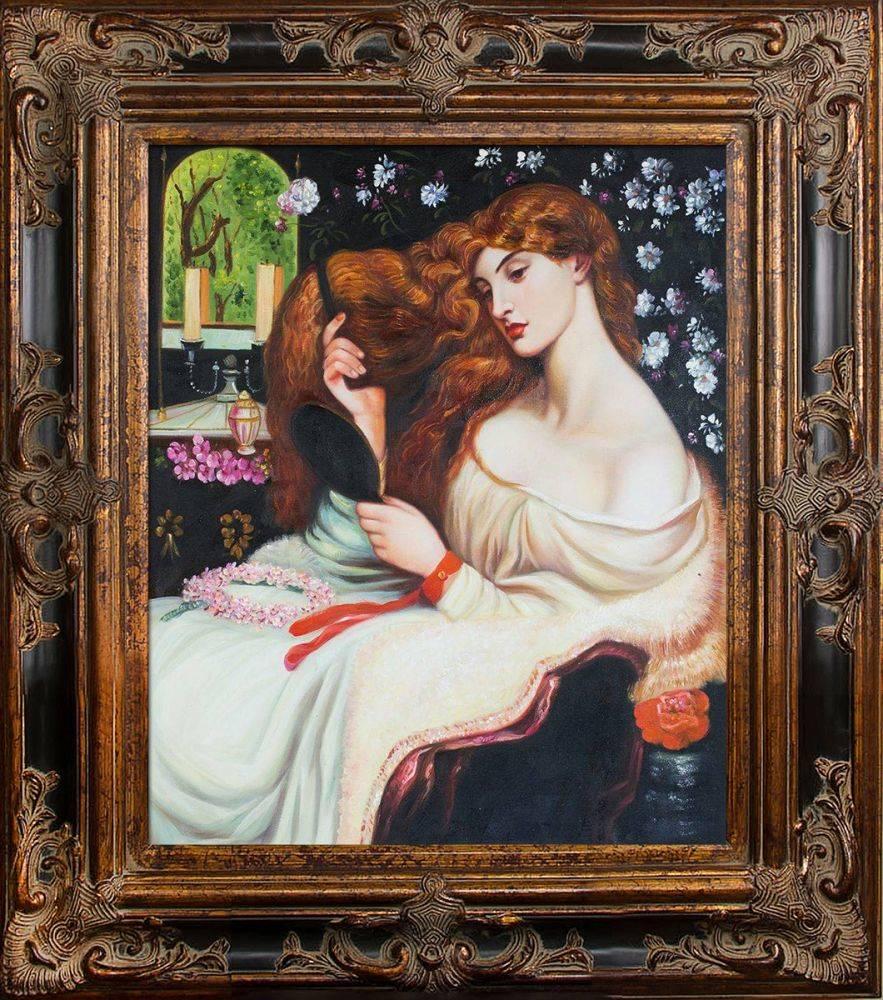
Lady Lilith PreFramed, Dante Rossetti PreFramed Oil Painting Reproduction
Lady Lilith is an oil painting by Dante Gabriel Rossetti first painted in 1866-1868 using his mistress Fanny Cornforth as the model, then altered in 1872-73 to show the face of Alexa Wilding. The subject is Lilith, who was, according to ancient Judaic myth, "the first wife of Adam" and is associated with the seduction of men and the murder of children.

Lady Lilith by Dante Gabriel Rossetti Paintings art prints, Dante gabriel rossetti, Painting
Dante Gabriel Rossetti's "Lady Lilith", 1866-73. Courtesy of Delaware Art Museum, Samuel and Mary R. Bancroft Memorial, 1935. In 1849 Dante Gabriel Rossetti, the 21-year-old poet-artist and founder member of the Pre-Raphaelite Brotherhood, met a milliner's assistant named Elizabeth Siddal. She was the daughter of a cutlery.

Lady Lilith by Dante Gabriel Rossetti ART PRINT Etsy
In Rossetti's painting, Lady Lilith, the subject dominates the picture. It is to her striking features that the eye is drawn, thanks in part to the brilliance of her skin, which almost acts as a source of light. Her gaze is remarkable for its intensity. However, it is not focused outside at the viewer, nor at any object in the picture except.

Lady Lilith by Dante Gabriel Rossetti Fine Art Print 770 Etsy Canada
In Dante Gabriel Rossetti's Lady Lilith (Figure 1), a woman gazes at her own reflection in a small hand-mirror whilst combing her abundant mass of golden hair, her loose white dress slipping to reveal a suggestive curve of bare shoulder. This woman is Lilith, known in traditional Jewish lore